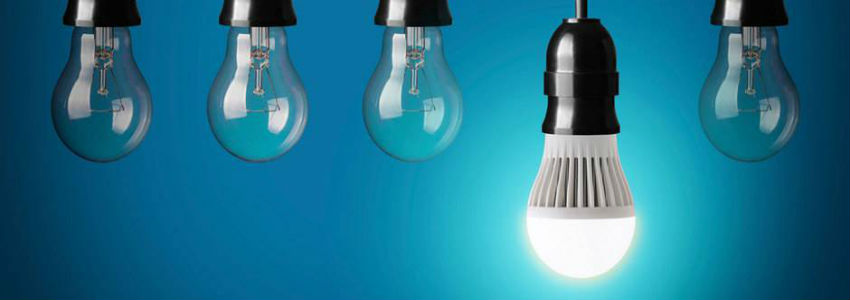
LED lights, or the lights made using light-emitting diodes (LEDs), are seen by industry as the future of lighting. LEDs differ significantly from traditional fluroscent lamps as well as Incandescent lamps in many ways. The advantages of LED lights far outways its sole major disadvantage of price. As the LED lighting industry matures and production reach higher levels, prices are bound to come down, making it the principal candidate to lead the lighting industry into the future.
How they are made
- Traditional Incandescent lamps (light bulbs) generate light by passing electric current through a resistive filament, thereby heating the filament to a very high temperature so that it glows and emits visible light.
- Fluorescent lamps (light bulbs) work by passing electricity through mercury vapor, which in turn emits ultraviolet light. The ultraviolet light is then absorbed by a phosphor coating inside the lamp, causing it to glow, or fluoresce. While the heat generated by a fluorescent lamp is much less than its incandescent counterpart, energy is still lost in generating the ultraviolet light and converting this light into visible light. If the lamp breaks, there is a risk of exposure to mercury.
- LED's are mostly made of semiconductor materials.
Pros and Cons of LEDs
- LED lamps offer long service life and high energy efficiency. Life cycle of LED lamps is multiple compared to incandescent lamps.
- LEDs are degraded or damaged by operating at high temperatures, so LED lamps typically need heat dissipation elements such as heat sinks and cooling fins.
- General-purpose lighting are usually white. LEDs emit light in a very small band of wavelengths. To emit white light from LEDs requires either mixing light from red, green, and blue LEDs, or using a phosphor to convert some of the light to other colors.
- Unlike a Compact fluorescent lamp or CFL, LED light bulbs contain no mercury.
- LED lamps turn on instantly. Their lifetime is unaffected by cycling on and off, so that they are well suited for light fixtures where bulbs are often turned on and off. LED light bulbs are also mechanically robust; most other artificial light sources are fragile.
- LED lamps have no glass tubes to break, and their internal parts are rigidly supported, making them resistant to vibration and impact. With proper driver electronics design, an LED lamp can be made dimmable over a wide range; there is no minimum current needed to sustain lamp operation.
- Diodes use direct current (DC) electrical power. To use them from standard AC power they are operated with internal or external rectifier circuits that provide a regulated current output at low voltage.
- LEDs do not emit light in all directions. LED light brightness is small compared to incandescent and compact fluorescent lamps. So in most applications, multiple LE diodes are used.
- Degradation of LED chips reduces luminous flux over life cycle as with conventional lamps.
How LED stand up to the competition
| Title | Incandescent | Halogen | Fluroscent | LED |
| Purchase Price | $2 | $4 | $4 | $20 |
| Electricity Usage | 60 W | 42 W | 13 W | 9 W |
| Lumens | 660 | 570 | 660 | 900 |
| Lumens/Watt | 11 | 13.6 | 50.8 | 100 |
| Color Temperature | 2700 | 3100 | 2700 | 3000 |
| CRI | 100 | 100 | 82 | 75 |
| Lifespan (Hours) | 2000 | 3500 | 8000 | 25000 |
| Bulb Cost over 10 Years @ 6 Hrs/Day | $21.90 | $25.03 | $10.95 | $17.52 |
| Energy Cost over 10 Years @ 15 Cents/KWh | $197.1 | $137.97 | $42.71 | $29.57 |
| Total Cost = Bulb Cost + Energy Cost | $219.00 | $163.00 | $53.66 | $47.09 |
* Comparison based on 6 hours use per day (21,900 hours over 10 yrs)
To summarize,
- Cooler lighting means a reduction of HVAC operation by 10-15%
- No hazardous waste (as fluorescent lighting contains mercury)
- Reduced CO2 emission, results in a smaller carbon footprint for the business
- No UV radiation or RF interference from LED lights
- Extremely long LED life
- very little maintenance required over time
- LEDs are a healthier and friendlier lightsource than fluorescent lighting
- LED lamps can be made interchangeable with other types of lamps.
- Low power consumption
- Very low heat output
- High reliability
- Flicker free - Buzz free
- Solid state design
- No ballast or transformer
- No fragile glass enclosure.
